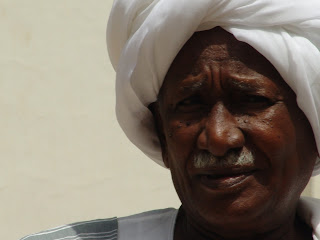In his
3 September declaration of war the Secretary General of the Sudan People’s
Liberation Movement in North Sudan (SPLM-N), Yasir Arman, declared that the
only path left open to the remnant Movement was the “establishment of a ‘national
democratic front’ committed to the comprehensive restructuring of the centre of
power in Khartoum”. To that end, Arman stated, the SPLM-N will work to promote
its recently sealed alliance with the forces of the Darfur rebellion and thus
consolidate a “political-military nucleus” that forwards “serious opposition
efforts” against the Khartoum regime. Arman went on to call upon the United
Nations Security Council (UNSC) to enforce a no-fly zone over Darfur, South Kordofan,
and the Blue Nile, the new South in (North) Sudan in the political jargon of
the SPLM-N. Arman’s notion of restructuring the centre of power through an
alliance of the ‘marginalized’, as it were, copies the ‘New Sudan’ thesis of
the late John Garang. In an interview with Africa Report in 1989 Garang
detailed his notion of the ‘New Sudan’ in the following terms:
“We are
talking here of a socio-political mutation - a new entity coming out of what we
have now. As a socio-political mutation, you cannot really delineate it by
saying one, two three. But we are talking about a new reality in which the
localisms and the parochialisms - Sudan is composed of more than 150 different
nationalities speaking different languages with various religions - are
transcended by a commonality to which we all pay our allegiance and our
patriotism. That commonality has never been achieved in our situation”.
The
SPLM-N, like the mother SPLM before it, proposes to takeover Khartoum through
an armed insurrection of the hinterlands. War between Garang’s SPLM and the
central government lasted for 22 years. Khartoum, however, remained what it has been
since its establishment under the Turkiya (Turco-Egyptian colonial rule,
1821-1885), the centre of an autocratic, overtly ambitious, chronically weak,
and thus demonstratively aggressive state. Instead of restructuring power at
the centre the SPLM eventually opted for deliverance by break-off, a choice
that the overwhelming majority of the South Sudanese favoured over Garang’s ‘New
Sudan’ agenda.
In
Sudan’s modern history only al-Mahdi (the Messiah), Mohamed Ahmed bin Abdalla, and
his Ansar had succeeded in crafting together the necessary revolutionary thrust
to overrun Khartoum from without. The Ansar besieged Khartoum for an approximate
ten months before they victoriously claimed the colonial citadel on 26 January
1885. The lessons learnt from the Mahdist episode constitute by and large the
guiding principles of the Sudanese state in its relations with its peripheries
as it developed under British colonialism (1898-1956) and further under successive
national governments.
The Mahdi,
who started his military campaign against the Turco-Egyptian Khartoum from the
insulation of the Nuba Mountains, propagated an egalitarian ethic that transcended
the parochialisms to which Garang referred to under the banner of Islamic
revival. In that manner he was able, albeit temporarily, to overcome the schism
between the riverain heartland and the wider periphery of Kordofan and Darfur
to the advantage of the latter. The
alliance between the bahar (river) and the gharb (West) broke down with the
Mahdi’s early death. His Khalifa (successor) Abdullahi al-Taaishi, a Baggara
from Darfur, completed the transformation of the Mahdist revolution into a
state structure, an exercise that demanded the centralisation of power in his
own hands. In that context, the Khalifa faced considerable resistance from the
riverain elite of the time, the Ashraf, a term denoting the superiority of the
Mahdi’s kin over the rabble majority of the Ansar. The confrontation between
the Khalifa and the Ashraf resulted in the latter’s defeat and eventual purge
from the upper echelons of Mahdist state power. When the riverain elite
re-emerged victorious it did so in alliance with the invading army of Herbert
Kitchener as the fifth column of the Anglo-Egyptian re-conquest.
To
subdue Khartoum the SPLM-N needs to consider the place of the riverain Sudan in
the equation. By defining its constituency in terms of a marginalized African
majority versus a dominant Arab minority the SPLM-N mirrors the divisive
ideology of the centre it seeks to reconstruct. In so doing the SPLM-N delivers
the heartland of the country it wishes to transform to the siege mentality long
nourished by Khartoum’s rulers. On both sides of the frontline, it is Sudan’s dispossessed
who are sacrificed at the altar of Khartoum.




No comments:
Post a Comment